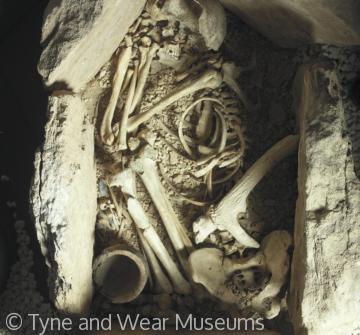Prehistoric settlement in the Sunderland area

The proximity of the river Wear, the mouth of which provided the only substantial harbour between Hartlepool and South Shields, was crucial to the development of the early settlements which together formed the nucleus of the modern city of Sunderland. Lying as it did, along an inhospitable stretch of coastline which was often subjected to the full force of the gales which blew in from the North Sea, the Wear mouth was not an easy harbour to navigate for the poor weather, unpredictable tides and sandbanks which formed at the confluence of the river and seas all represented hazards to shipping. In spite of this, the lower Wear valley was extremely attractive to settlers. The river channel, navigable as far as Hylton and perhaps beyond, had been gouged out of the ten metre belt of glacial boulder clay which overlay the magnesian limestone of the Durham coastal plain. The land on both banks of the river was particularly rich in minerals and was eminently suitable for agricultural purposes, enabling it to support a considerable population.
Stray finds of flints and microliths, used as weapons and tools, indicate that prehistoric hunter gatherers were roaming across the region in the Palaeolithic and Mesolithic periods (i.e. before 4000 BC). Later on, the farming communities of the Neolithic period (c.4000-2000 BC) and the Bronze Age (c.2000-700 BC) were also to leave evidence of settlement in the locality. Examples of Neolithic sites in the area include those of Copt Hill, at Houghton-le-Spring and Hastings Hill, near Herrington whilst important evidence of Bronze Age settlement has been discovered at Humbledon Hill. Recent excavations in Bishopwearmouth, at the site of the former Vaux brewery, have found important evidence of settlement dating from the Mesolithic period through to the early Iron Age (c.700 BC - mid-1st century AD). During the Iron Age, settlers were also in evidence further upstream. That Hylton was, at this time, already recognized as a strategic river crossing point is indicated by the presence of two Iron Age log boats found in the river there and at Offerton in the 1880s.
Content generated during research for two paperback books 'Sunderland and its Origins: Monks to Mariners' (ISBN 13 : 9781860774799) and 'Sunderland: Building a City' (ISBN 13 : 978-1-86077-547-5 ) for the England's Past for Everyone series







